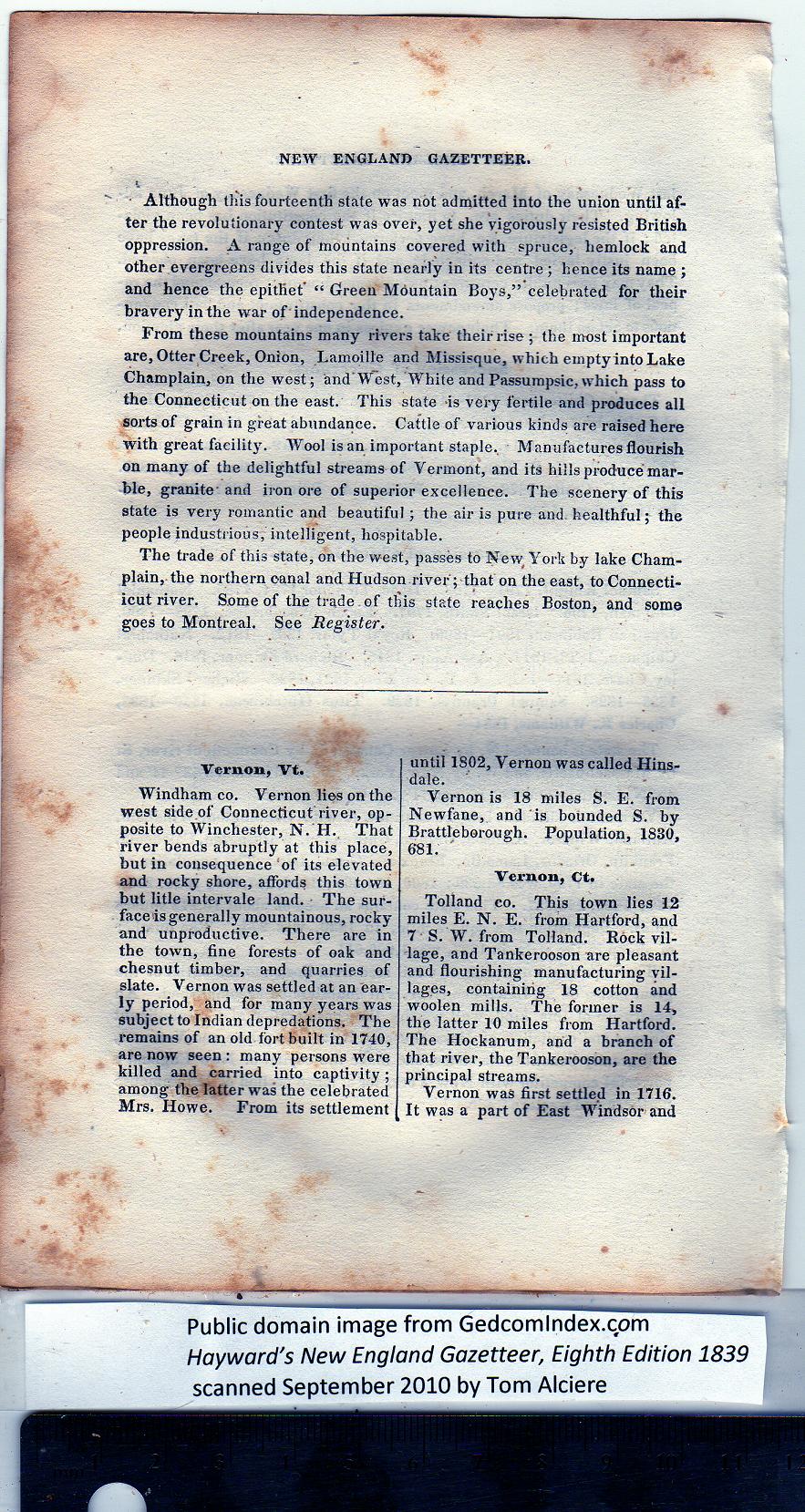|
NEW ENGLAND GAZETTEER.
• Although this fourteenth state was not admitted into the union until af-
ter the revolutionary contest was over, yet she vigorously resisted British
oppression. A range of mountains covered with spruce, hemlock and
other evergreens divides this state nearly in its centre ; hence its name ;
and hence the epithet* “ Green Mountain Boys,” celebrated for their
bravery in the war of independence.
From these mountains many rivers take their rise; the most important
are, Otter Creek, Onion, Lamoille and Missisque, which empty into Lake
Champlain, on the west; and West, White and Passumpsic, which pass to
the Connecticut on the east. This state -is very fertile and produces all
sorts of grain in great abundance. Cattle of various kinds are raised here
with great facility. Wool is an important staple. Manufactures flourish
on many of the delightful streams of Vermont, and its hills produce mar-
ble, granite- and iron ore of superior excellence. The scenery of this
state is very romantic and beautiful; the air is pure and. healthful; the
people industrious, intelligent, hospitable.
The trade of this state, on the west, passes toNew^'orkby lake Cham-
plain, the northern oanal and Hudson river ; that on the east, to Connect-
icut river. Some of the trade of this state reaches Boston, and some
goes to Montreal. See Register.
|
Vernon, Vt.
Windham co. Vernon lies on the
west side of Connecticut river, op-
posite to Winchester, N. H. That
river bends abruptly at this place,
but in consequence of its elevated
and rocky shore, affords this town
but litle intervale land. The sur-
face is generally mountainous, rocky
and unproductive. There are in
the town, fine forests of oak and
chesnut timber, and quarries of
slate. Vernon was settled at an ear-
ly period, and for many years was
subject to Indian depredations. Tbe
remains of an old fort built in 1740,
are now seen: many persons were
killed and carried into captivity ;
among the latter was the celebrated
Mrs. Howe. From its settlement
until 1S02, Vernon was called Hins-
dale. |
Vernon is 18 miles S. E. from
Newfane, and is bounded S. by
Brattleborough. Population, 1830,
681.
Vernon, Ct.
Tolland co. This town lies 12
miles E. N. E. from Hartford, and
7 S. W. from Tolland. Rock vil-
lage, and Tankerooson are pleasant
and flourishing manufacturing vil-
lages, containing 18 cotton and
woolen mills. The former is 14,
the latter 10 miles from Hartford.
The Hockanum, and a branch of
that river, the Tankerooson, are the
principal streams.
Vernon was first settled in 1716.
It was a part of East Windsor and |
PREVIOUS PAGE ... NEXT PAGE
This page was written in HTML using a program written in Python 3.2 and image-to-HTML text generated by ABBYY FineReader 11, Professional Edition.
|
